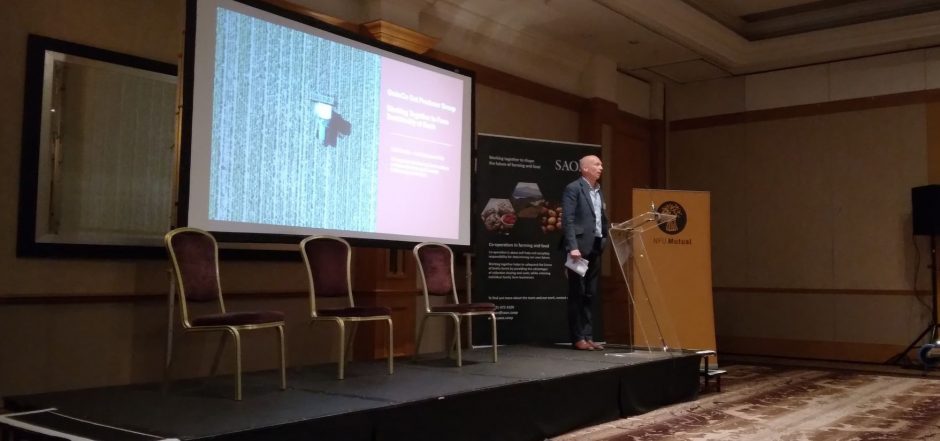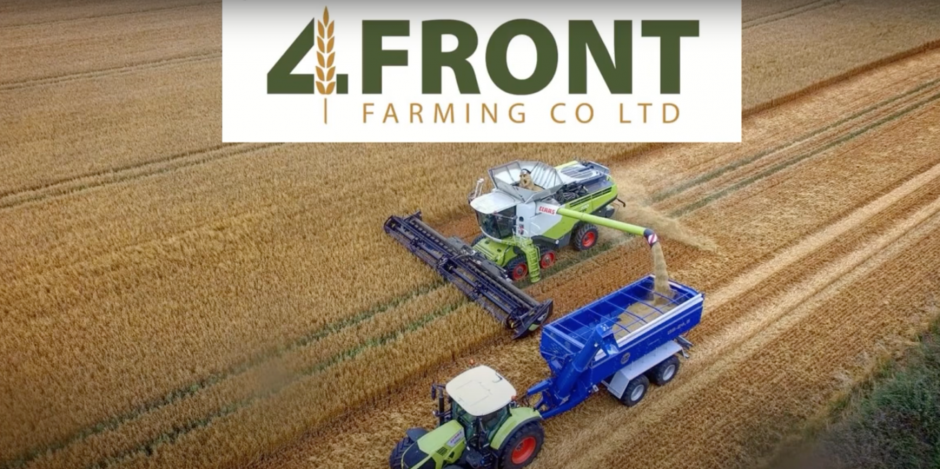Sustainability and net zero were on the agenda at the annual conference of the Scottish Agricultural Organisation Society (SAOS), held in Dunblane last month.
The event kicked off with a presentation from Mark Brooking, sustainability director at dairy co-op First Milk, which has 700 members across England, Scotland and Wales.
Producing 850 million litres of milk a year, the co-op is continuing to grow, with milk volumes up 25%, turnover up more than 50%, and net assets almost doubling to more than £40m.
But Mr Brooking claimed that opponents of the dairy industry are using climate change as a stick to beat it with. “There are individuals and organisations which would like to see no dairy produced in the UK at all,” he said.
To counter this, he said, the dairy industry needs to be proactive. “If there are practices we cannot defend, we need to change those practices. Every time there is a negative story in the press someone will decide to stop using dairy.”
In any case, dairy farmers need to act on climate change, he said. “Make no bones about it, we have a climate emergency which will need addressing”.
But the growing awareness of food sustainability presents an opportunity as well as a challenge because consumers “are interested in where their food is coming from, more than ever before“.
On this score, he said, co-op farmers have a story to tell, as “traditional family farms that care about people, animals, the Earth”.
Related: First Milk announces farming bonus for emissions reduction
Co-ops need to stress their work building social capital, said Mr Brooking, giving the example of First Milk’s Women In Agriculture group; and also on animal welfare, with all First Milk farmers taking this “beyond the RSPCA five freedoms” to sign a pledge that “cows will go out to graze and no health animal will be euthanised on farm”.
But net zero is the biggest issue, with 95% of dairy industry emissions coming from farms, and First Milk has set a series of targets for its members. “We have to address this … it’s a big challenge and it will mean that farming will be different in the future.”
To reach net zero by 2040, farmers need to sequester 100,000 tonnes of CEO in the soil, each year, by 2025; and increase milk produced from forage by 10% by 2025. All transport and processing must be done by renewable fuel by 2030.
To drive this, Mr Brooking advocates regenerative agriculture, a holistic model which uses animals in the field to help sequester carbon, work to minimise soil disturbance and protect the soil surface, work to encourage plant diversity and maintain living roots.
Farm data and digital mapping are crucial here, he said, to allow farmers to measure increased carbon measures in the soil and demonstrate “how we’re helping the planet“. Using soil sampling to a metre depth, First Milk now has the biggest soil data set in the UK, he added; it is also mapping hedges, watercourses, grazing, cultivation, electricity use, feed and fertiliser.
“We’re collaborating for success through the whole supply chain,” he said, with a positive response from First Milk farmer members: more than 90% have signed up.
Related: SAOS welcomes new team members to broaden its involvement in agri-food sector
In a separate discussion on data, George Noble, data and connectivity manager at SAOS, said the organisation is growing an ecosystem of data initiatives, such as CarbonPositive and Smart Rural, gathering information from ground sensors, weather stations, energy monitors and cattle GPS; and new biodiversity monitors are being developed, that can listen to birdsong or detect types of pollen.
The key lesson, he said, is “keep it simple. Data is there to tell us how time is best spent and how we can make improvements.”
This is farmer-owned data – “our own bank of data, undisputed” – which can help in a number of ways, from improving the picture of calf mortality to reducing the cost of regulatory compliance.
SAOS can help, he said, by “getting the right people round the table, helping people plan around data governance and use, and giving farmers a say in the creation of value from the data they supply”.

John Hutcheson, chair of SAOS and director of GrainCo oat producer group, also discussed the way farmers are working together drive sustainability at scale.
This is increasingly market-driven, he said, noting that Quaker–- one of GrainCo’s main customers – has asked for more sustainable production with an auditable process so it can show food provenance on its packaging.
Sustainable grain production can be a challenge in Scotland, with wet weather harvests meaning more energy is needed to dry the crop. But Matt Waldie, one of GrainCo’s farmers, is leading the way in finding solutions, chairing a group of farmers – 4 Front Farming – who are sharing equipment to drive savings and collaborating for more eco-friendly farming techniques, such as using a cover crop such as clover which feeds the soil, creates organic matter, reduces fertiliser inputs, protects soil over winter and feeds wildlife.
Matt Waldie is also a member of Leaf, a sustainable farming marque which has plans for soil management, crop health, water management, and land and nature conservation.

If farmers are collaborating with each other and with their customers on sustainability, they are also working with the public to drive better understanding of the land, Graham Barr – chair of Pentlands Land Management Association, discussed problems in Pentland Hills Regional Park – which comprises 9,000 hectares of land on urban fringe of Edinburgh.
The park has 600,000 leisure visitors a year, but funding cuts mean there are only three rangers, with no visitor education. As a result, rubbish is left, fires are lit, trees are chopped, gates are left open letting livestock loose, and livestock is attacked by dogs.
All of this has a significant impact on farmers’ mental health, said Mr Parr. Recognising the need to manage the situation better, SAOS has been helping to facilitate discussion, building relationships between landowners and councils, the emergency services and politicians, and providing a collective voice to drive visitor engagement and education, and drive biodiversity projects in the park.
Later the conference looked into how farm co-ops can better communicate their work and values gain market advantage. Amanda Brown, from SAOS, who is project director for the SF&D Partnership’s Knowledge Bank, said Kantar research figures suggest there is interest in sustainability among consumers – such shoppers make up about a third of the market. This spend is worth £36bn in UK, and £3.3bn in Soctland; and with the trend growing, there is opportunity for business.
One problem is that price and convenience form barriers to shoppers looking to do the right thing – a problem set to worse as the cost of living crisis bites harder. Still, there is scope to “commercialise what we are doing right back through the supply chain”, she said.
And with Scottish farm co-ops having stories to tell around traditioaln family farming and sustainability there is potential to work proactively with consumers.
Marketing expert Anna Davies, from rural PR specialists Scene and Herd, said collaboration through industry-wide marketing initiatives, such as Food and Drink Scotland, is important. “We have mutual goals,” she added. “We all want farming to be seen in a positive light; we all stand to benefit from consumers understanding what we do.”
She said farmers should use all channels to promote what they do and tell positive stories – social media, print, podcasts, and broadcast. And it is important to share and spread content – whether it is a tweeted photo or a short Tik-Tok film – to ensure the message does not get stuck in a social media bubble. 4 Front Farming is one example of a co-op farming organisation with a busy Facebook feed.
“A little bit more acton on everyone’s part will do a lot,” she said. “We need to support each other – if we see something on FB that another farmer has posted it’s a good idea to support it.
“Consumers want information on production methods, conservation, animal health and welfare. We need to tell them these stories.”